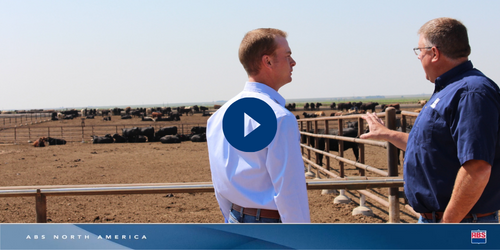The benefits of artificial insemination to beef cow-calf producers are hard to deny, yet only a fraction of beef cattle are artificially inseminated annually in the U.S. and around the world. Unassisted calves from first calf heifers; faster, more efficient growth rates; high value carcasses; shorter calving seasons; and heavier, more uniform calves are just a few of the well known advantages of A.I. Perhaps the biggest advantage to utilizing A.I. is the value of the replacement females you can create. Unfortunately, the economic advantage of creating the right replacement females is also the hardest benefit to quantify. LEARN MORE: Sexcel Genetics
Maternal Hits your Bottom Line
Most cow-calf producers have an image of the ‘ideal cow’ in mind. It may even go beyond a mental picture to a list of genetic traits and attributes that compose this ideal. Modern semen sexing technology provides us with a powerful tool to make replacement females from a select portion of any given cowherd. However, just because female sexed semen is available on a given bull does not mean that his daughters will make good cows. When making the decision of which bull to use in making your next set of replacement females, ask yourself: “Can I afford to make the wrong cow?”

Maternal profitability is complex and does vary with regional environmental differences. Admittedly, there are also numerous marketing channels and endpoints that should be considered in selection of the appropriate genetics. Nonetheless, there is a subset of traits that drive cow-calf profitability, no matter the production environment/system. Most producers operate with at least a portion of their resources fixed. For many, that is a limited amount of grazing land available for pasture and forage production. For even more, it is a limited number of hours that can be committed to the cow-calf enterprise. Optimizing the return from these limited resources should be their focus. SHOP: Sexed Genetics
Factors Impacting Maternal Profitability
It’s easy to recognize the impact of genetics when it shows up as additional money in your calf check from the sale barn or the closeout from the feedyard. However, as you consider the genetics that will be used in making your next generation of replacement females, it is important to consider the traits that impact your input costs. Cow size, dry matter intake, fertility, longevity, maternal calving ease, milk, and convenience traits significantly impact maternal profitability. Breeding decisions that move these traits in the wrong direction can quickly add up to hundreds of dollars in additional cow costs on an annual basis.

LEARN MORE: Sexcel 60/40 Synch
Helping producers identify the most profitable genetics for their production system is in ABS Global’s DNA. From the early days of progeny testing through the Circle A Sire Alliance program to our present-day development of NuEra Genetics, ABS has been committed collecting and analyzing the data needed to validate the profitability of the genetics we offer.
Contact your local ABS Representative today to find out how female Sexcel genetics can help you build a resilient, profitable, and sustainable cow herd.
Watch our “Can you Afford to Make the Wrong Cow?” video
Join Todd Sears (Beef Sales Director) as he sits down with Kenny Wells (Beef Genetic Program Manager) to discuss what goes into the “cost” of your cow and how can using A.I. genetics get the most traits you are looking for at less cost. Share a little information about yourself for exclusive access to ‘Can you Afford to Make the Wrong Cow?’







